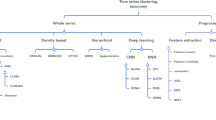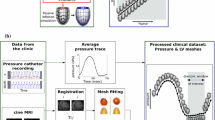Abstract
Objective.We studied the spectral characteristics of the EEGburst suppression patterns (BSP) of two intravenous anesthetics,propofol and thiopental. Based on the obtained results, we developed amethod for automatic segmentation, classification and compactpresentation of burst suppression patterns. Methods.The spectralanalysis was performed with the short time Fourier transform and withautoregressive modeling to provide information of frequency contents ofbursts. This information was used when designing appropriate filters forsegmentation algorithms. The adaptive segmentation was carried out usingtwo different nonparametric methods. The first one was based on theabsolute values of amplitudes and is referred to as the ADIF method. Thesecond method used the absolute values of the Nonlinear Energy Operator(NLEO) and is referred to as the NLEO method. Both methods have beendescribed earlier but they were modified for the purposes of BSPdetection. The signal was classified to bursts, suppressions andartifacts. Automatic classification was compared with manualclassification. Results.The NLEO method was more accurate,especially in the detection of artifacts. NLEO method classifiedcorrectly 94.0% of the propofol data and 92.8% of thethiopental data. With the ADIF method, the results were 90.5% and88.1% respectively. Conclusions.Our results show thatburst suppression caused by the different anesthetics can be reliablydetected with our segmentation and classification methods. The analysisof normal and pathological EEG, however, should include information ofthe anesthetic used. Knowledge of the normal variation of the EEG isnecessary in order to detect the abnormal BSP of, for instance, seizurepatients.
Similar content being viewed by others
REFERENCES
Akrawi WP, Drummond JC, Kalkman CJ, Patel PM. A comparison of the electrophysiologic characteristics of EEG burst-suppression as produced by isoflurane, thiopental, etomidate, and propofol. J Neurosurg Anesthesiol 1996; 8: 40–46
Muthuswamy J, Sherman DL, Thakor NV. Higher-order spectral analysis of burst patterns in EEG. IEEE Trans Biomed Eng 1999; 46: 92–99
Thomsen CE. Hierarchical cluster analysis and pattern recognition applied to the electroencephalogram. PhD Thesis, Aalborg University, Denmark, 1992
Lipping T, Jäntti V, Yli-Hankala A, Hartikainen K. Adaptive segmentation of burst-suppression pattern in isoflurane and enflurane anesthesia. Int J Clin Monit Comput 1995; 12: 161–167
Arnold M, Doering A, Witte H, Dörschel J, Eisel M. Use of adaptive Hilbert transformation for EEG segmentation and calculation of instantaneous respiration rates in neonates. J Clin Monit 1996; 12: 43–60
Galicki M, Witte H, Dörschel J, Eiselt M, Griessbach G. Common optimization of adaptive preprocessing units and a neural network during the learning period. Application in EEG pattern recognition. Neural Networks 1997; 10: 1153–1163
Leistritz L, Jäger H, Schelenz C, Witte H, Putsche P, Särkela P, Specht M, Reinhart K. New approaches for the detection and analysis of electroencephalographic burst-suppression patterns in patients under sedation. J Clin Monit 1999; 15: 357–367
Sherman DL, Brambrink AM, Walterspacher D, Dasika VK, Ichord R, Thakor NV. Detecting EEG bursts after hypoxic-ischemic injury using energy operators. Proceedings of the 19th Annual International Conference of the IEEE/EMBS, 1997: 1188–1190
Atit M, Hagan J, Bansal R, Ichord R, Geocadin R, Hansen C, Sherman D, Thakor N. EEG burst detection: Performance evaluation. Proceedings of the First Joint BMES/EMBS Conference Serving Humanity, Advancing Technology, 1999: 441
Hjorth B. EEG analysis based on time domain properties. Electroenceph Clin Neurophysiol 1970; 29: 306–310
Appel U, Brandt A. A comparative study of three sequential time series segmentation algorithms. Signal Processing 1984; 6: 45–60
Bodenstein G, Praetorius H. Feature extraction from the encephalogram by adaptive segmentation. Proc IEEE 1977; 65: 642–657
Michael D, Houchin J. Automatic EEG analysis: A segmentation procedure based on the autocorrelation function. Electroenceph Clin Neurophysiol 1979; 46: 232–235
Plotkin EI, Swamy MNS. Nonlinear signal processing based on parameter invariant moving average modelling. Proc. CCECE '21. 1992; TM3.11.1-TM3.11.4
Agarwal R, Gotman J, Flanagan D, Rosenblatt B. Automatic EEG analysis during long-term monitoring in the ICU. Electroenceph Clin Neurophysiol 1998; 107: 44–58
Kaiser JF. On a simple algorithm to calculate the ''energy'' of a signal. IEEE Int Conf Acoust, Speech, and Signal Processing 1990; 1: 381–384
Anttila V, Rimpiläinen J, Pokela M, Kiviluoma K, Mäkiranta M, Jäntti V, Vainionpää V, Hirvonen J, Juvonen T. Lamotrigine improves cerebral outcome after hypothermic circulatory arrest: A study using a chronic porcine model. J Thorac Cardiovasc Surg 2000; 120: 247–255
Koskinen M, Särkelä M, Seppänen T, Jäntti V, Suominen K. Characterizing EEG burst suppression with spectral analysis methods. Proceedings of the 1999 Finnish Signal Processing Symposium, 1999: 132–136
Burg JP. A new analysis technique for time series data. NATO Advanced Study Institute on Signal Processing with Emphasis on Underwater Acoustics, August 12–23, 1968
Värri A. Digital processing of the EEG in epilepsy. Lic. Thesis, Tampere University of Technology, Finland, 1988
Rampil IJ, Weiskopf RB, Brown JG, Eger EI, Johnson BH, Holmes MA, Donegan JH. I653 and isoflurane produce similar dose-related changes in the electroencephalogramof pigs. Anesthesiology 1988; 69: 298–302
Hartikainen K, Rorarius M, Mäkelä K, Peräkylä J, Varila E, Jäntti V. Visually evoked bursts during iso-flurane burst suppression anaesthesia. Br J Anaesth 1995; 74: 681–685
Hartikainen KM, Rorarius M, Peräkylä JJ, Laippala PJ, Jäntti V. Cortical reactivity during isoflurane burst-suppression anesthesia. Anesth Analg 1995; 81: 1223–1228
Thomsen CE, Prior PF. Quantitative EEG in assessment of anaesthetic depth: Comparative study of methodology. Br J Anaesth 1996; 77: 172–178
Bruhn J, Röpcke H, Rehberg B, Bouillon TW, Hoeft A. EEG approximate entropy, but not median EEG frequency or SEF95, correctly classifies burst suppression pattern as deep anesthesia. Anesthesiology 1999; 91: A604
Rampil IJ. A primer for EEG signal processing in anesthesia. Anesthesiology 1998; 89: 980–1002
Author information
Authors and Affiliations
Rights and permissions
About this article
Cite this article
Särkelä, M., Mustola, S., Seppänen, T. et al. Automatic Analysis and Monitoring of Burst Suppression in Anesthesia. J Clin Monit Comput 17, 125–134 (2002). https://doi.org/10.1023/A:1016393904439
Issue Date:
DOI: https://doi.org/10.1023/A:1016393904439




